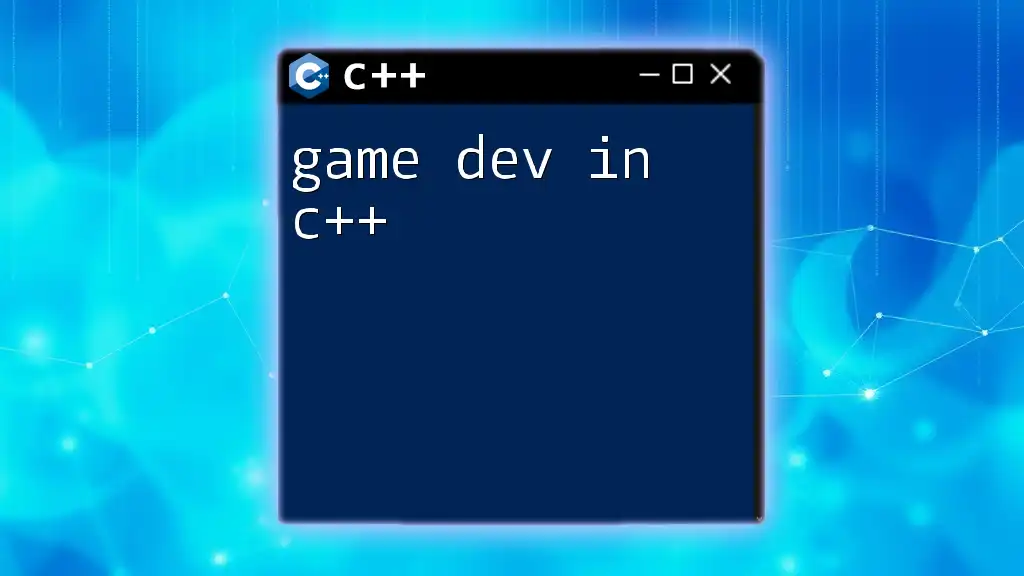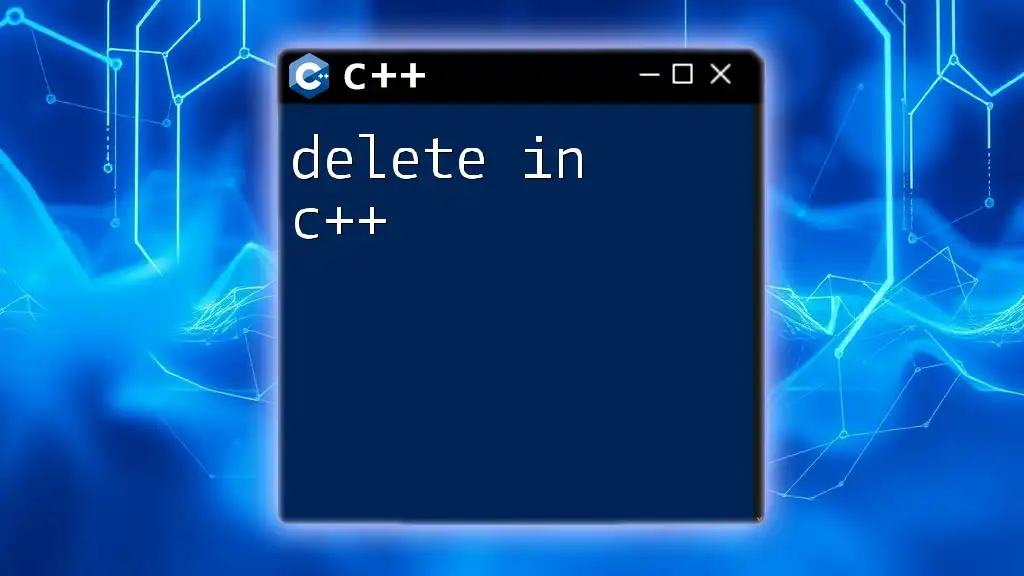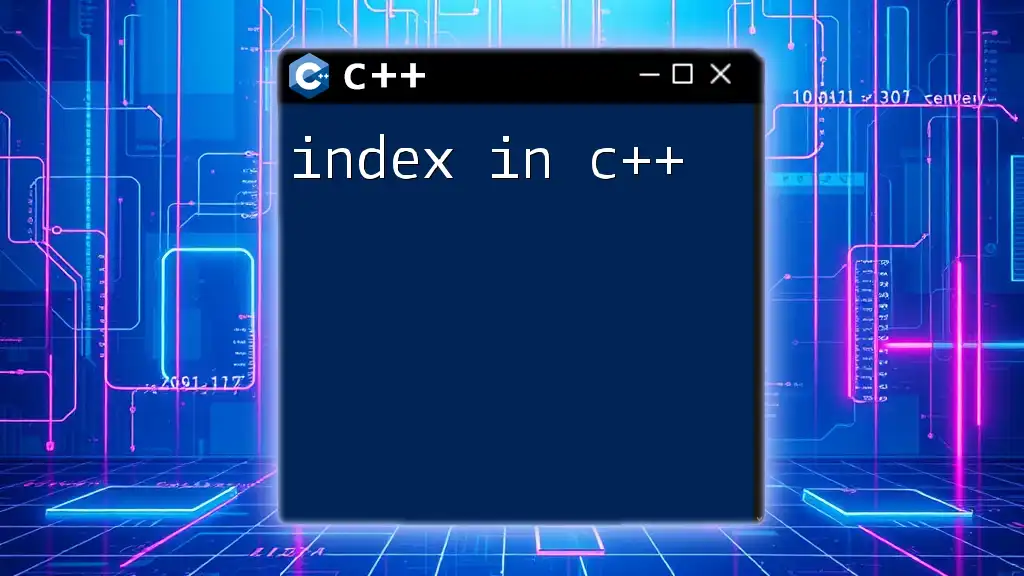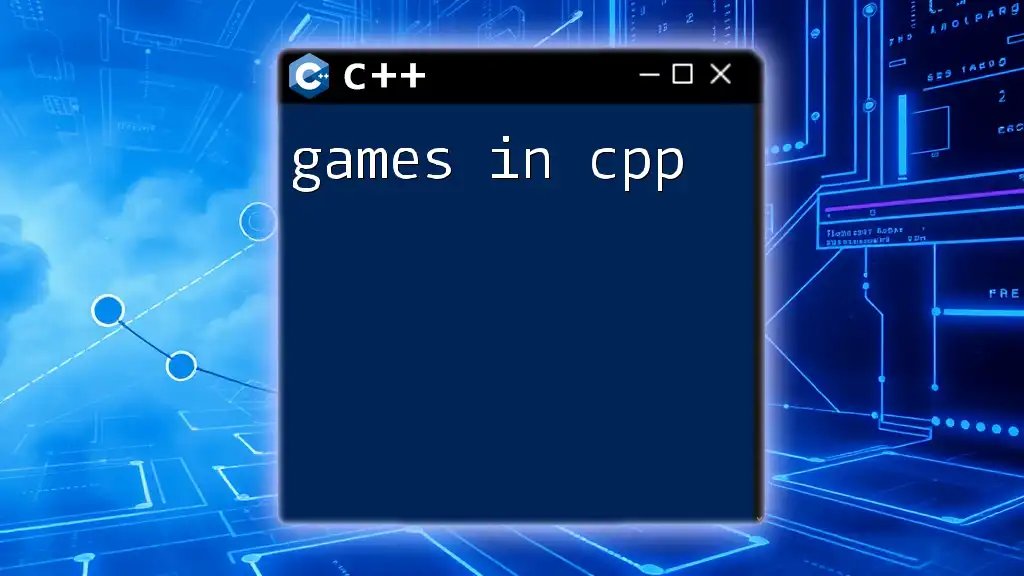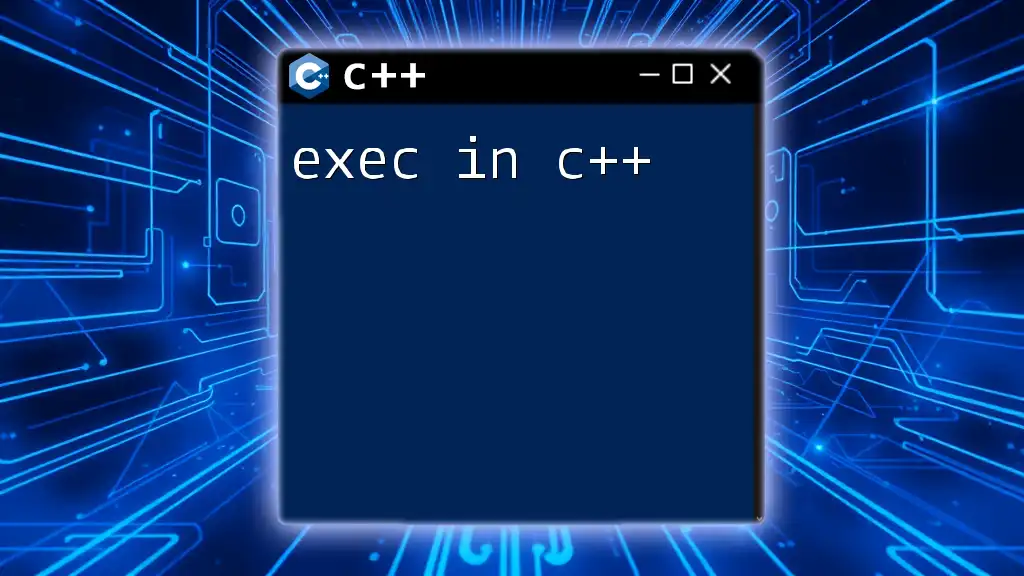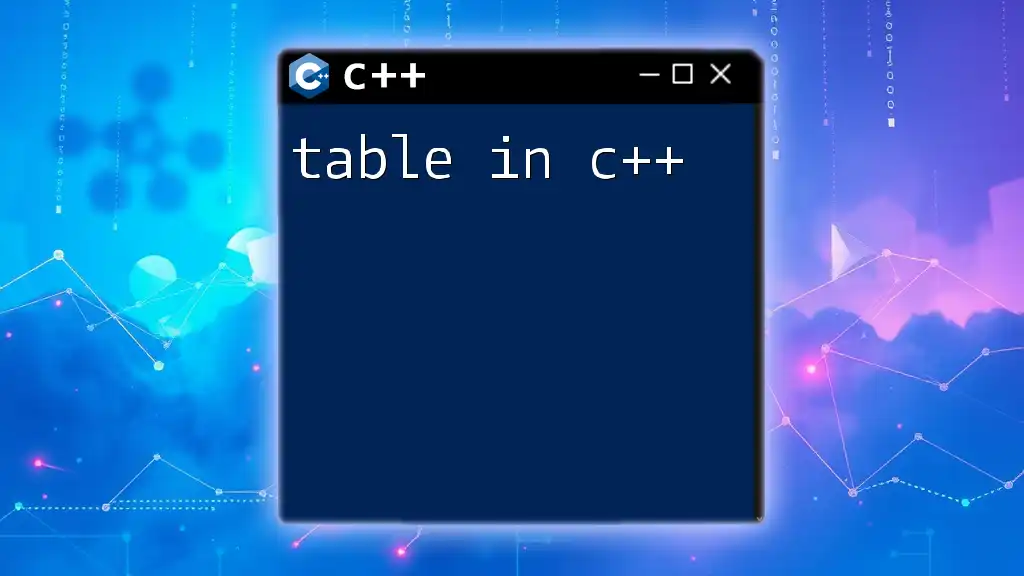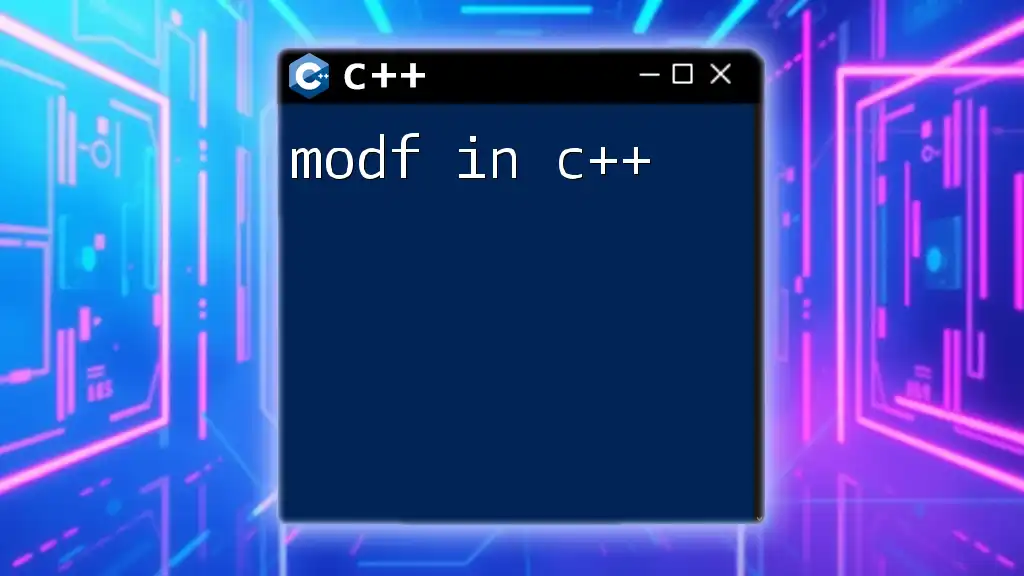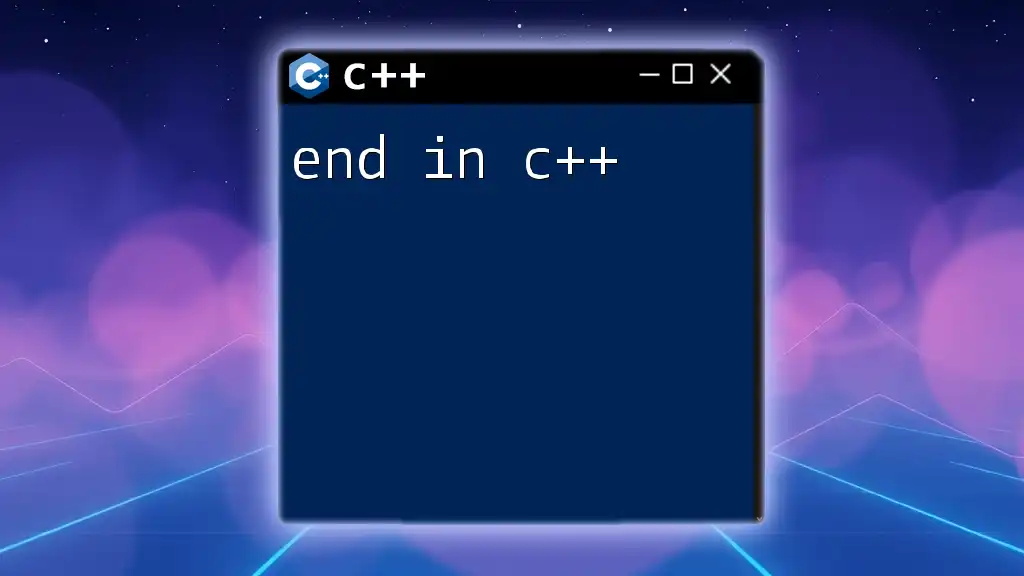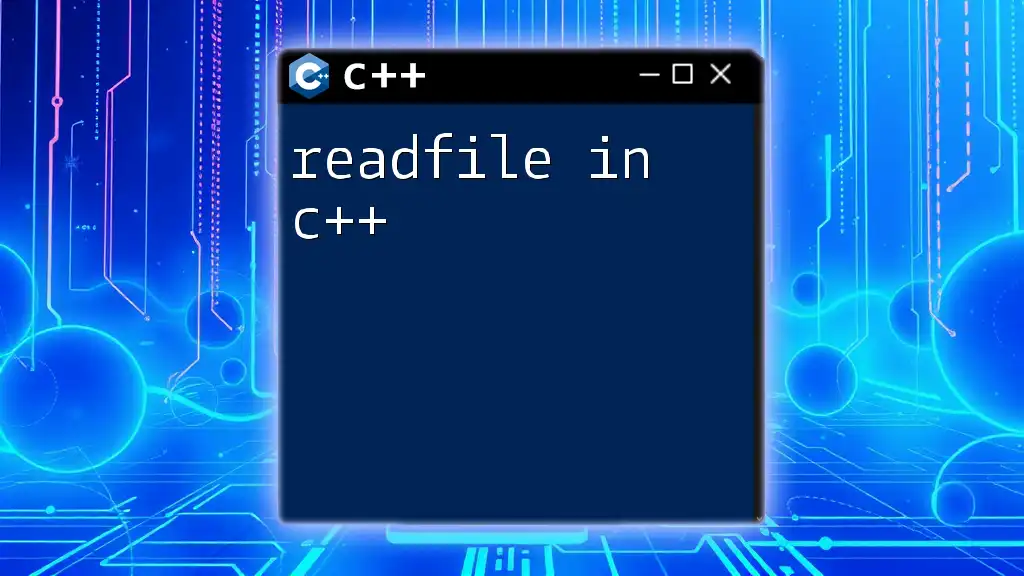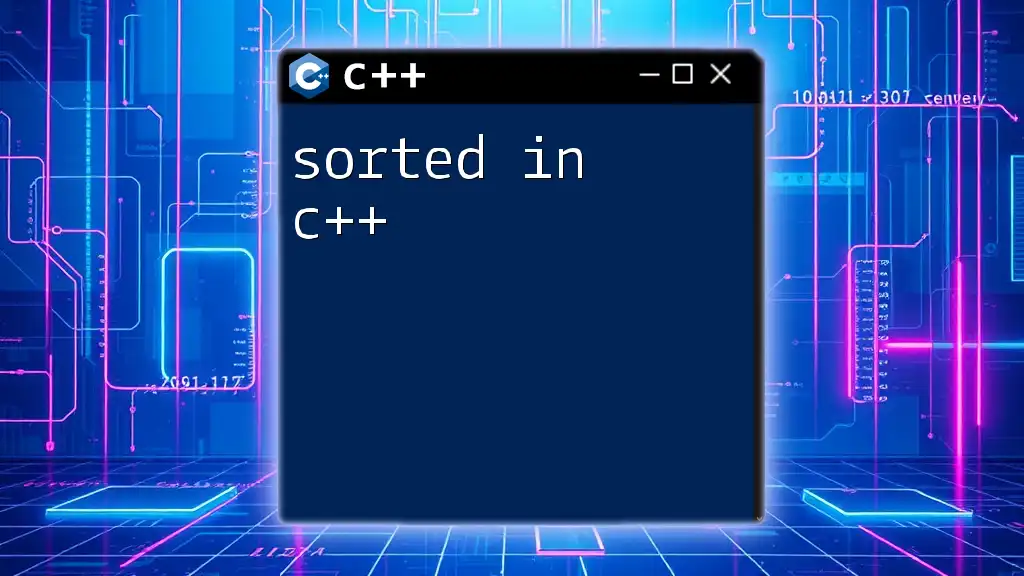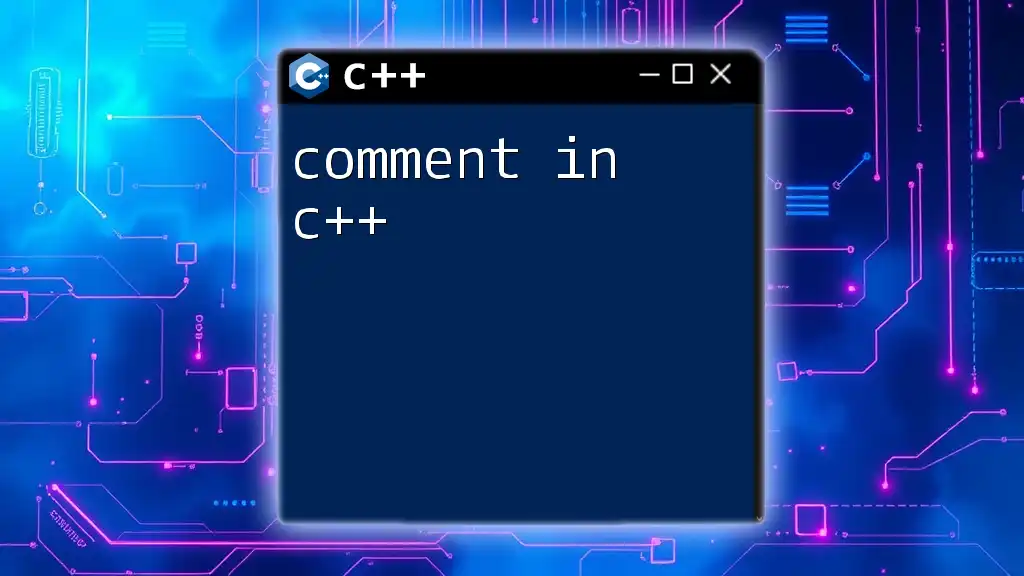Game development in C++ allows for high-performance applications through efficient memory management and direct hardware access, making it an ideal choice for creating resource-intensive games.
Here's a simple example of a C++ class that represents a game character:
class GameCharacter {
public:
GameCharacter(std::string name) : name(name), health(100) {}
void takeDamage(int amount) {
health -= amount;
if (health < 0) health = 0;
}
void displayStatus() {
std::cout << name << " has " << health << " health remaining." << std::endl;
}
private:
std::string name;
int health;
};
What is Game Development?
Game development is the intricate process of creating video games, involving a combination of art, storytelling, and technical skills. It encompasses various stages, including game design, coding, graphics creation, sound design, and testing. Each of these stages is essential to delivering a high-quality gaming experience.
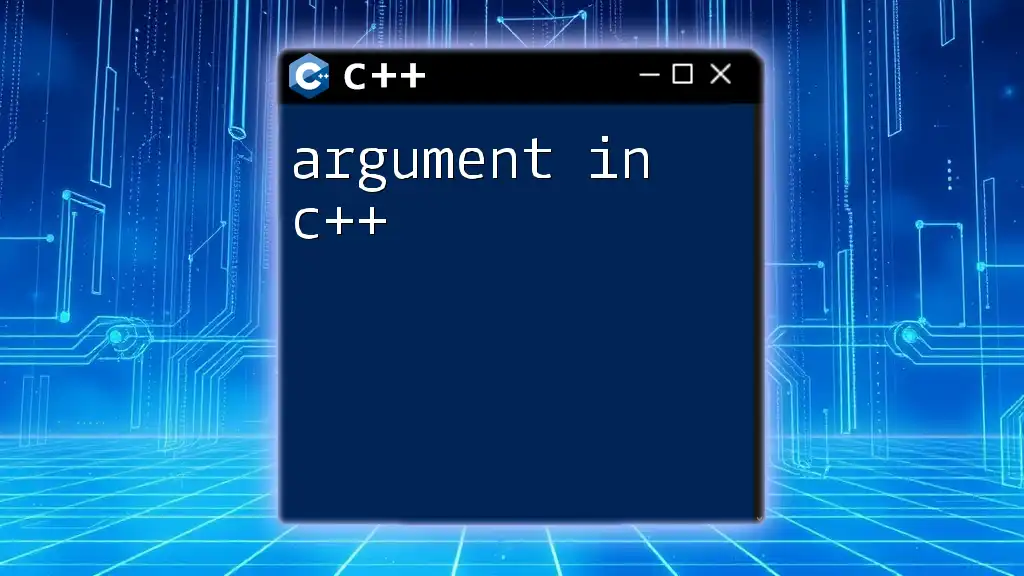
Why Choose C++ for Game Development?
Choosing C++ for game development offers several significant advantages. C++ is widely regarded for its ability to deliver high performance, which is crucial for resource-intensive applications like games. Its close proximity to hardware allows for fine-tuned memory management, which is often required in complex game development environments.
Moreover, many successful game engines, such as Unreal Engine and CryEngine, are built using C++. This implies that knowing C++ grants access to these powerful tools and a wealth of resources in terms of libraries and frameworks.
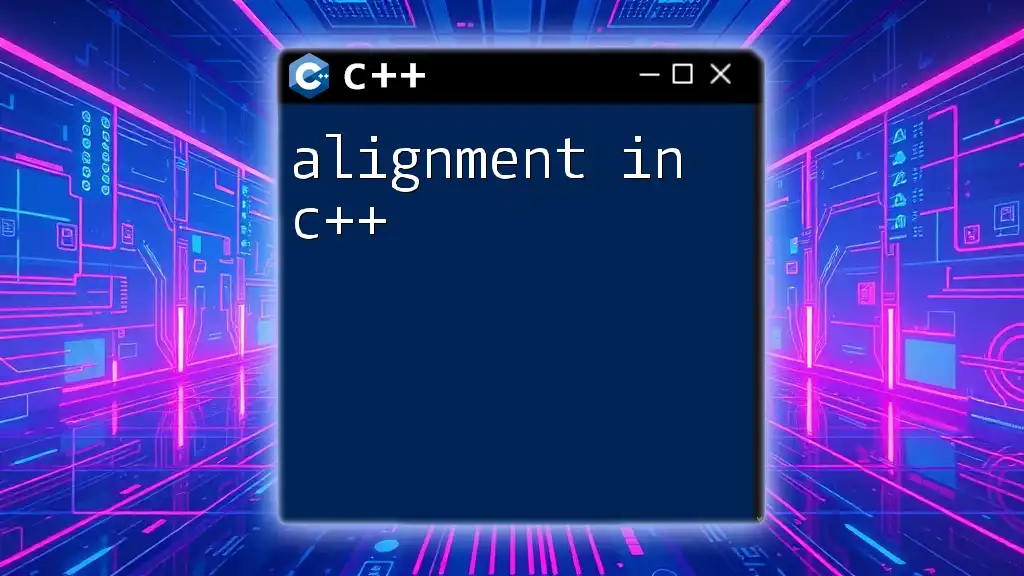
Fundamentals of C++ for Game Development
Basic Syntax and Structures
Before diving into game-specific implementations, understanding C++’s basic syntax and structures is vital. Variables, control structures, and functions allow developers to craft game logic effectively.
A simple game loop is a foundational concept in any game. Here’s a minimal example:
while (gameIsRunning) {
// Code to update game state and render graphics
}
Object-Oriented Programming in C++
C++ is an object-oriented language, which means you can leverage classes and objects to create entities in your game. This organization allows for clearer relationships and data management between game components.
For example, you could define a Player class like this:
class Player {
public:
int health;
void move();
void attack();
};
In this example, the attributes and behaviors associated with the player are encapsulated within the class, contributing to a clean and efficient code structure.
Memory Management
Memory management is crucial in game development as it directly impacts performance. C++ provides low-level access to memory but requires developers to be responsible in managing pointers and references. Using smart pointers can greatly enhance safety and prevent memory leaks.
Consider the following example with `shared_ptr`:
#include <memory>
std::shared_ptr<Player> player1 = std::make_shared<Player>();
Smart pointers like `shared_ptr` automatically manage memory, simplifying the coding process while maintaining efficiency.
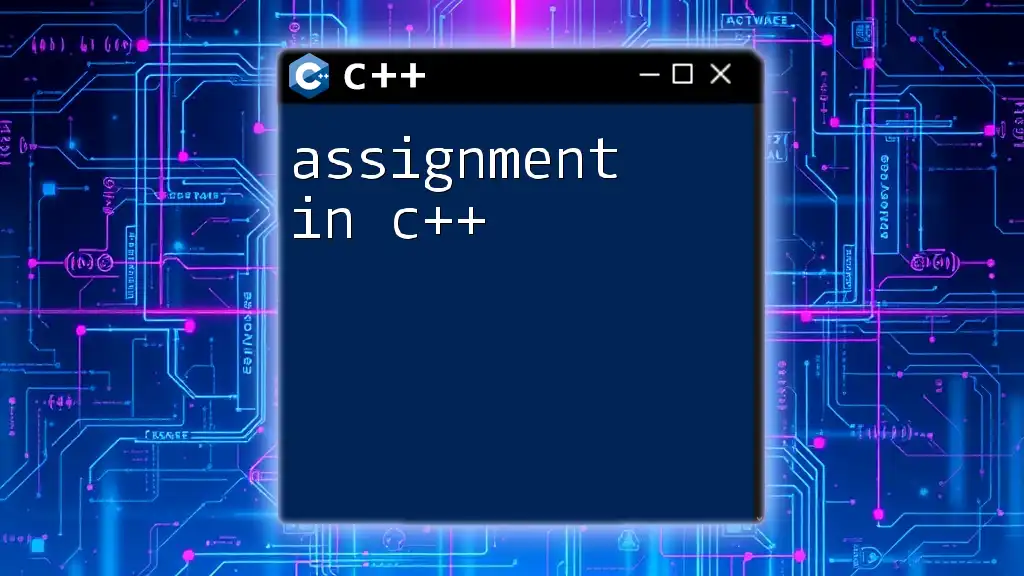
Core Concepts in Game Development
Game Loops and Timers
The game loop is the core of any game, responsible for continuous updating and rendering. Understanding how to implement frame rate control is essential for smoother gameplay.
Here's a simple setup for a game loop:
const int frameDelay = 16; // approximately 60 FPS
auto frameStart = std::chrono::high_resolution_clock::now();
By calculating the time taken for each frame and adjusting your loop accordingly, you can ensure that your game runs at an optimal frame rate.
Input Handling
Managing player input is an integral part of game development. This involves capturing actions from devices like keyboards and mice. For example, using SDL (Simple DirectMedia Layer), you can handle keyboard events as follows:
if (event.type == SDL_KEYDOWN) {
switch (event.key.keysym.sym) {
case SDLK_UP:
// Move player up
break;
}
}
This snippet checks for a keypress event and allows your game character to react accordingly.
Rendering Graphics
To bring your game to life, a graphics library such as SFML or SDL can be utilized for rendering. Basic techniques include drawing shapes or images on the screen.
Here’s an example of how you might load and display an image using SFML:
sf::Texture texture;
texture.loadFromFile("player.png");
sf::Sprite sprite(texture);
window.draw(sprite);
This approach helps in efficiently rendering sprites, which are crucial for creating aesthetically pleasing graphics.
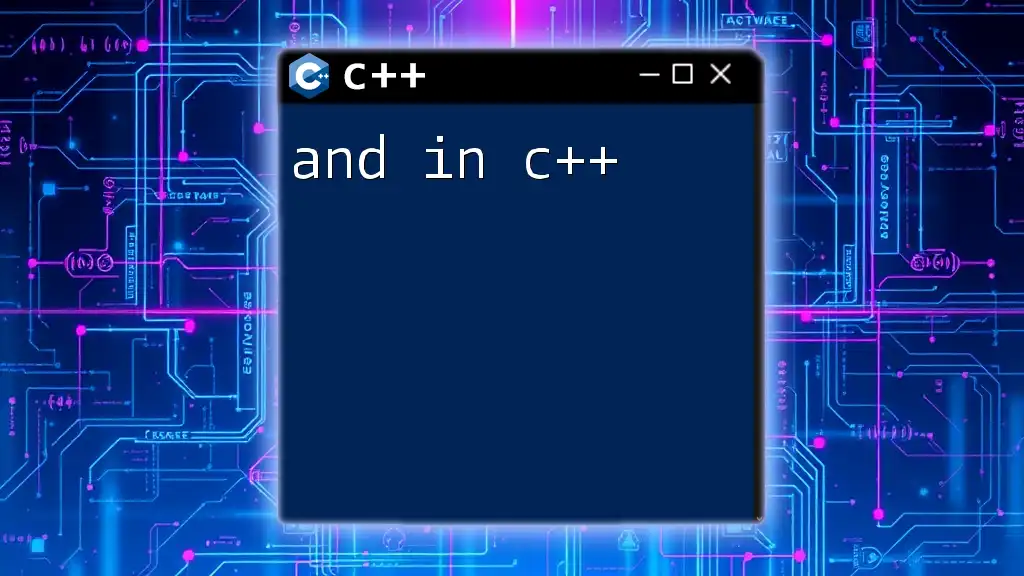
Advanced Game Development Concepts
Physics and Collision Detection
Integrating physics into games creates realism and enhances gameplay. Using physics engines like Box2D can save you from developing complex algorithms from scratch. Collision detection is also vital to ensure game objects interact correctly.
Here's a simple collision detection algorithm:
if (playerX < obstacleX + obstacleWidth &&
playerX + playerWidth > obstacleX &&
playerY < obstacleY + obstacleHeight &&
playerY + playerHeight > obstacleY) {
// Handle collision
}
This snippet checks whether the player collides with an obstacle, allowing you to define the consequences of such interactions.
Artificial Intelligence in Games
Artificial Intelligence (AI) can elevate your game's gameplay experience. Basic AI can include simple behaviors such as NPC movement towards a player.
Here’s an example of implementing basic AI:
if (playerX > npcX) {
npcX++; // Move towards player
}
This functionality can be expanded into more complex pathfinding algorithms, enhancing your game’s interactivity.
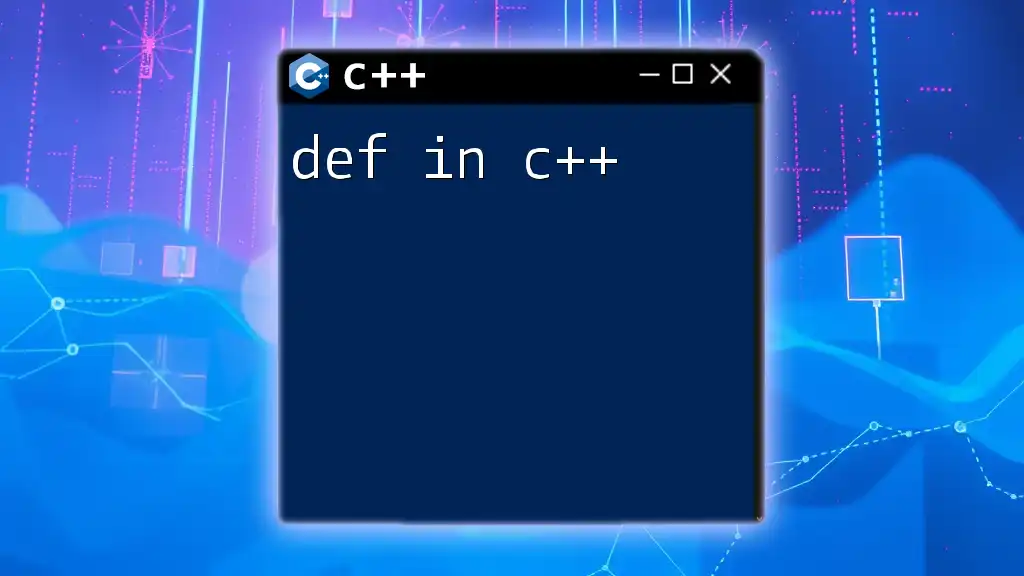
Common Game Development Challenges
Debugging and Optimization
The debugging process is vital during game development. Tools like Valgrind and gdb can be invaluable for identifying memory leaks and runtime errors. Moreover, optimizing your game code can lead to performance improvements, ensuring a smooth experience for players.
Cross-Platform Development
Developing games for multiple platforms introduces unique challenges. You must consider differences in hardware, input methods, and performance. Libraries that support cross-platform development can ease this process significantly.
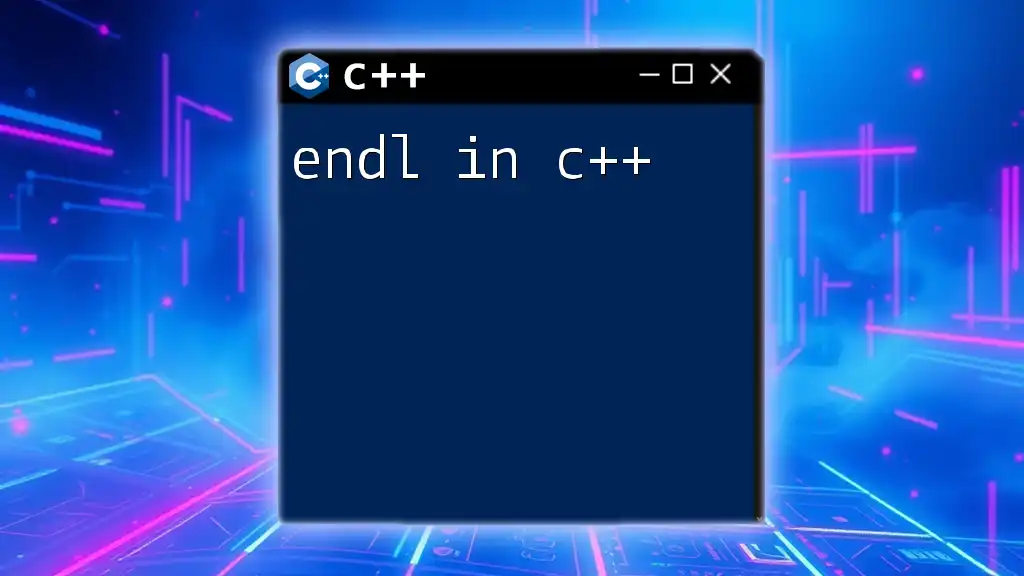
Bringing It All Together: A Simple Game Project
Planning Your Game
Once armed with the basics, conceptualizing your game idea is the next step. Creating a game design document helps outline your objectives, mechanics, and visual style. This document serves as a roadmap throughout the development process.
Building a Simple Game
Crafting a small game, such as a platformer, allows you to apply your knowledge effectively. Start simple and gradually layer complexity to understand each aspect better. Implementing features step-by-step will ensure that your project remains manageable.
Best practices include maintaining a clear project structure that separates assets, libraries, and code, contributing to a more organized workflow.
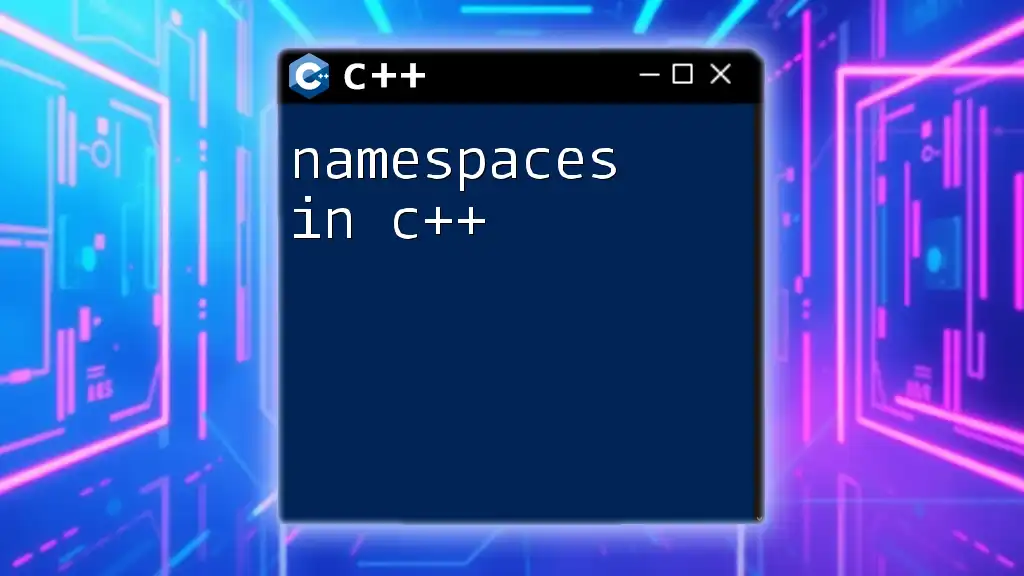
Conclusion
The potential for game dev in C++ is vast, backed by a robust set of tools and a community that thrives on innovation. As you continue to explore this domain, you can delve into emerging trends and technologies that ensure a future filled with exciting opportunities.
Additional Resources
To gain further insights, seek out books, websites, and communities dedicated to game development. Engage with others in the field, participate in forums, and tackle recommended projects to enhance your skills and deepen your understanding of game development in C++.

